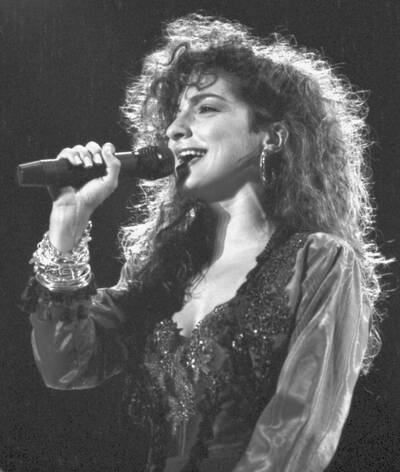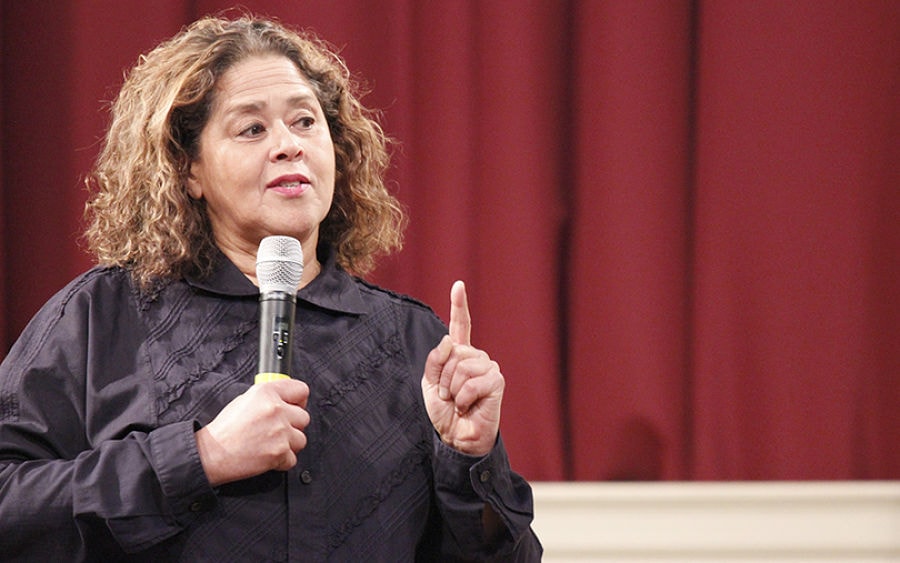Hello.
A small whisper echoes onstage.
Hello.
Louder this time: Heeeeelllooo.
Enter stage Left. Ten years old. A ball of wild, frizzy, dark brown curly hair. A little too tall. A little too wide. A second-generation Cuban American who often felt a little too much, in more ways than one, tiptoes onto the stage ready to sing her heart out.
The reality might have been a bit less dramatic, but that’s the way she remembers it. Maybe it was her love of the spotlight, or the stories her grandfather regaled her with about his love of music and his short stint as a singer in Cuba. Whatever the cause, being a performer was all she dreamed of.
Cue Beauty and the Beast.
It was her first trip to the city and her first Broadway show. No one told her she couldn’t sing from the audience. And from then on, she was hooked. Hooked. Nothing will ever shine as bright as those stage lights. She now dreams of the marquees in NYC’s theatre district.
But actually working in the theatre became a very complicated, unrequited love story for a young Cuban American who was too much: too tall, too wide, too brown… and yet not enough—or so she was told. Every time she opened her mouth to sing a showtune, she was told that the sound wasn’t “musical theatre” enough. She felt alone. Isolated. Unfortunately, it’s a story that so many BIPOC people uniquely share in the theatre world. It’s the story of people everywhere on the outside looking in.
Still, she found that she could not eat, sleep, or survive without the theatre. The theatre was and still is everything to her.
Fast forward 30ish years.
Still too much, definitely taller and now collecting wrinkles, a very proud second-generation Cuban American with big dreams takes the stage, both literally and figuratively. Her love affair with the theatre has grown and blossomed over the years. To her lifelong love of theatre, she has added education as an equal passion. She was honored as a national 2016 Kennedy Center’s and Stephen Sondheim Inspirational Teacher, and is a 2019 fellow of the O’Neill Theatre Center’s National Critics Institute. She is incredibly proud to be one of Theatre Communications Group’s Rising Leaders of Color, and she will later be named the 2022 recipient of the Stephen Schwartz Musical Theatre Teacher of the Year Award, presented by the ASCAP Foundation.
For the last 19 years, she has dedicated her life to the theatre and her students, with the hope of impacting the theatre community as a teaching artist, writer, theatre critic, director, and actress. The little girl grew into herself. “Cristinita” turned into Cristina, and she is me.
In one of the master classes at the Educational Theatre Association (EdTA) Conference held in Los Angeles, I am asked, “Why are you a theatre educator?” Faster than I could think, faster than I could rationalize, I say, “I want to be the teacher I needed when I was younger.” Loud applause rang through the room. I had found my people: teaching artists who love their job and their students, sometimes beyond reason. Now that those words had sprung from my lips, I needed to reflect: What had I really needed when I was young? I needed someone to tell me that my differences were my superpower, and that there was indeed a community in the theatre if I looked (and worked) hard enough. So what was I going to do with my time on this planet to make space in the theatre for people like myself?
The next thought was how important inspiration is, not only for students but for educators. And immediately I thought about the people who had inspired me to become the theatre artist and educator I am today.
Cue Gloria Estefan.

Every word, every drumbeat, and every sway of the hips connected me to music in a way I could never fully explain. In fact, given a few more paragraphs, this could easily turn into a Gloria Estefan love letter. She shaped so much of who I was as a performer when I was in middle school and high school because I saw a bit of myself in her. Gloria Estefan came into my life exactly when I needed her. Growing up in the 1980s as a young girl in the Hispanic community living in America, I didn’t see many people who looked like me in the media. Truthfully, I could find no one who looked even remotely like me in movies, onstage, or in magazines at the drugstore. Was there a place for me? For us, my people?
Gloria Estefan showed the world that a Cuban woman could command the attention of the world. She made her crossover into English- language pop just as my frontal lobe was forming. She is one of the reasons I believed that, yes, I can. My very first and only fan letter was to Gloria right after her “Coming out of the Dark” tour. You can’t imagine the joy I experienced when, in generous response to my fan letter, she sent a box full of concert shirts, CDs, and a letter from her, all to be picked up at her restaurant, Larios on the Beach, in South Beach. Fast forward years later to the tears streaming from my eyes watching On Your Feet!, a stage show about Gloria’s life and music, on the Broadway stage. I may never recover. This was a story where a Hispanic woman wasn’t a tool to tell the story; she was the story.
Cue Anna Deavere Smith.
Intersectionality was something I thought more and more about. I wasn’t just Hispanic; I was also a woman. One who often couldn’t find a story where the woman wasn’t there as a romantic interest. To make matters worse, I was being bombarded with messages that told me that the parts of me that were “too much” were not meant to be seen onstage.

I was first introduced to Anna in my BFA theatre program at Florida International University. She took the theatre by storm by using her superpowers: writing,and performing her own devised work. She was proof that if the world doesn’t invite you to the party, you throw your own. I will never forget reading Fires in the Mirror for my playwriting class. Little did I realize that a homework assignment would change my view on the world, entirely and forever. For me, Anna Deavere Smith herself embodies rebellion. She rebelled against what theatre is “supposed” to be and forged her career by centering the stories she felt passionate about sharing. This challenged my own work as an artist and gave way to me creating my own one- person show.
Her work also transformed me as an educator. Two years in a row, my students wrote their own devised theatre piece titled “Uncensored Truths,” which were among the most rewarding experiences for my students and myself. When I think about what kind of artist I hope to be one day, it’s Anna Deavere Smith. She changed my entire view of what the theatre is. She forged her own path and still to this day is creating the most inspirational work.
Cue Lin-Manuel Miranda.
My love affair with this force of nature began way before Hamilton. It started simply. I love playbills. I collect them by the hundreds (the literal hundreds). My students know this: Playbills for the many shows I have been to, and many I have received as gifts from students, are proudly displayed in my classroom, office, on any blank wall, really. For a self-proclaimed theatre geek living in Miami, any playbills coming from NYC, the theatre capital of the world, take a special place in the display.

The playbill given to me years ago for a little show you may know called In the Heights marks a moment that changed the trajectory of my life. After watching the show and listening to the cast album on a loop (96,000 dollars holler!), I have never felt more seen in my life. This led me to direct In the Heights, in a school production where the performance came with lessons on the immigrant story, discussions about assimilation, lengthy debates on gentrification, and school-wide assemblies. Everyone in the whole community was invested when the curtains finally rose. A certain number of happy tears are to be expected after a high school performance from proud thespians and their equally proud parents. But this was like none other: The Hispanic community came out in full force to see themselves onstage—really see themselves onstage, not in a version through the white media. To actually see themselves: as abuelas who cared deeply for grandkids that may or may not be biological, as parents who sacrifice their own material needs to give their kids an opportunity in America better than their own. As the first generation in my family to get our college degrees, my sisters, cousins, and I knew about that sacrifice. We saw ourselves in the sacrifices the families made for a better life in America depicted by the characters in the musical, but it was about so much more. My whole community saw themselves and our music on glorious display.
Seeing our families onstage contributed to the confidence I had to finally step on the stage as an adult. When Lin-Manuel Miranda wrote In the Heights, it showed me how there was a place for the Hispanic community to exist in the theatre. Most importantly, he showed all of us there is a place for us.
The theatre is imperfect. A lot of change is still needed to fully make Black and brown communities feel welcome, both onstage and in the audience. But I have hope. If I could talk to the 10-year-old ball of wild curls shaking on stage trying to make her voice heard, I would tell her to keep dreaming big. There will be people inspiring you. And who knows? Maybe you will inspire the next generation.
Cristina Pla-Guzman is a writer and educator based in Miami.


